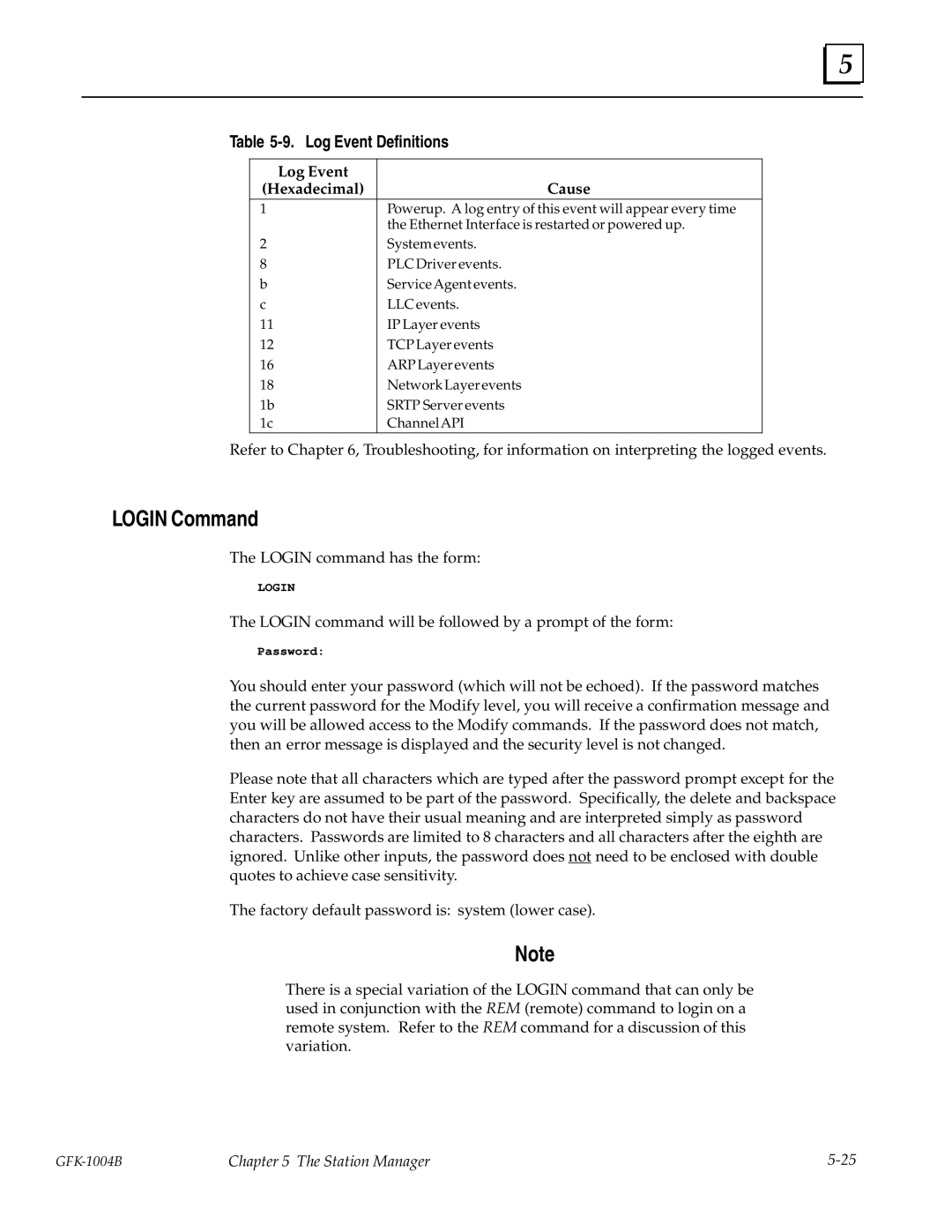
5 |
Table 5-9. Log Event Definitions
Log Event |
| |
(Hexadecimal) | Cause | |
1 | Powerup. A log entry of this event will appear every time | |
| the Ethernet Interface is restarted or powered up. | |
2 | Systemevents. | |
8 | PLC Driver events. | |
b | Service Agent events. | |
c | LLC events. | |
11 | IP Layer events | |
12 | TCP Layer events | |
16 | ARPLayerevents | |
18 | Network Layer events | |
1b | SRTP Server events | |
1c | ChannelAPI | |
Refer to Chapter 6, Troubleshooting, for information on interpreting the logged events.
LOGIN Command
The LOGIN command has the form:
LOGIN
The LOGIN command will be followed by a prompt of the form:
Password:
You should enter your password (which will not be echoed). If the password matches the current password for the Modify level, you will receive a confirmation message and you will be allowed access to the Modify commands. If the password does not match, then an error message is displayed and the security level is not changed.
Please note that all characters which are typed after the password prompt except for the Enter key are assumed to be part of the password. Specifically, the delete and backspace characters do not have their usual meaning and are interpreted simply as password characters. Passwords are limited to 8 characters and all characters after the eighth are ignored. Unlike other inputs, the password does not need to be enclosed with double quotes to achieve case sensitivity.
The factory default password is: system (lower case).
Note
There is a special variation of the LOGIN command that can only be used in conjunction with the REM (remote) command to login on a remote system. Refer to the REM command for a discussion of this variation.
Chapter 5 The Station Manager |
